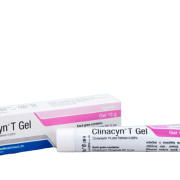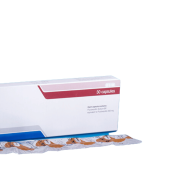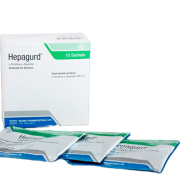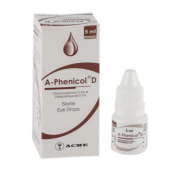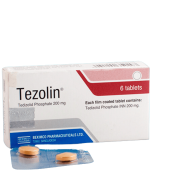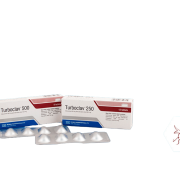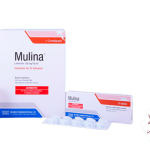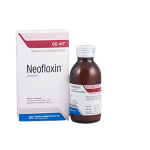Neofloxin
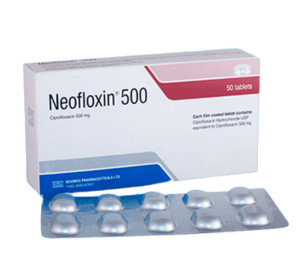
Generic Name: Ciprofloxacin
Dosage Form: Coated Tablet, XR film Coated Tablet, Granules for Suspension & Intravenous Infusion
TG Name: Anti-infectives
1. What Neofloxin is and what it is used for?
The active ingredient of Neofloxin® Tablet, Neofloxin®-500 Tablet, Neofloxin®-750 Tablet, Neofloxin® XR Tablet, Neofloxin® XR-1000 Tablet and Neofloxin® Granules for Suspension is Ciprofloxacin Hydrochloride USP. Ciprofloxacin, a fluoroquinolone, is an extremely broad spectrum antimicrobial agent and acts by inhibiting a subunit of DNA gyrase which is essential in the reproduction of bacterial DNA. This mode of action differs from that of Penicillins, Cephalosporins, Aminoglycosides and Tetracyclines and therefore, organisms resistant to these antibiotics are generally sensitive to Ciprofloxacin.
2. Before you take Neofloxin
Do not take this medicine and tell your doctor if:
Ciprofloxacin is contraindicated in patients who have shown hypersensitivity to Ciprofloxacin or other quinolones.
Take special care with Neofloxin
Check with your doctor before taking this medicine if:
Ciprofloxacin should be used with caution in patients with a history of convulsive disorders. Crystalluria related to the use of Ciprofloxacin has been observed only rarely. Patients receiving Ciprofloxacin should be well hydrated and excessive alkalinity of the urine should be avoided.
Taking other medicines
Concurrent administration of Ciprofloxacin with theophylline may lead to elevated plasma concentrations of theophylline and prolongation of its elimination half-life. This may result in increased risk of theophylline related adverse reactions. If concomitant use cannot be avoided, plasma levels of theophylline should be monitored and dosage adjustments made as appropriate.
Antacids containing magnesium hydroxide or aluminium hydroxide may interfere with the absorption of Ciprofloxacin resulting in serum and urine levels lower than desired, concurrent administration of these agents with Ciprofloxacin should be avoided. Probenecid interferes with renal tubular secretion of Ciprofloxacin and produces an increase in the level of Ciprofloxacin in the serum. This should be considered if patients are receiving both drugs concomitantly. As with other broad spectrum antibiotics prolonged use of Ciprofloxacin may result in overgrowth of nonsusceptible organism. Repeated evaluation of the patient’s condition and microbial susceptibility testing is essential. If super infection occurs during therapy, appropriate measures should be taken.
Pregnancy and breast-feeding
Reproduction studies performed in mice, rats and rabbits using parenteral and oral administration did not reveal any evidence of teratogenicity, impairment of fertility or impairment of pre/post natal development. However as with other quinolones, Ciprofloxacin has been shown to cause arthropathy in immature animals and therefore its use during pregnancy is not recommended. Studies in rats have indicated that Ciprofloxacin is secreted in milk, administration to nursing mothers is thus not recommended. Moreover, Pregnancy category USFDA C.
3. How to take Neofloxin?
Always use Neofloxin exactly as your doctor has told you. You should check with your doctor or pharmacist if you are not sure.
Neofloxin® Granules: Box containing 14 sachets of granules. Each sachet contains Ciprofloxacin Hydrochloride USP equivalent to Ciprofloxacin 250 mg.
Neofloxin® Granules for Suspension: Box containing a glass bottle of Ciprofloxacin granules. After reconstitution, each 5 ml contains Ciprofloxacin Hydrochloride USP equivalent to Ciprofloxacin 250 mg.
The reconstituted suspension should be stored below 30°C, preferably in a refrigerator and used within 14 days of preparation. Shake the bottle well before each use.
Appropriate dosing volumes of Neofloxin® Granules for Suspension:
- 1 tea-spoon (5 ml) suspension is equivalent to 250 mg Ciprofloxacin
- 2 tea-spoon (10 ml) suspension is equivalent to 500 mg Ciprofloxacin
- 3 tea-spoon (15 ml) suspension is equivalent to 750 mg Ciprofloxacin
How much to take?
The dosage of Ciprofloxacin is determined by the severity and type of infection, the sensitivity of the causative organism(s) and the age, weight and renal function of the patient.
Adults: The dosage range for adults is 250 -750 mg twice daily.
In infections of the lower and upper urinary tract (depending on severity): 250-500 mg twice daily.
In respiratory tract infections: 250-750 mg twice daily for both upper and lower respiratory tract infections, depending on severity. For the treatment of known Streptococcus pneumonia infection, the recommended dosage is 750 mg twice daily.
In gonorrhoea: a single dose of 250 or 500 mg.
In the majority other infections, 500-750 mg twice daily should be administered.
Dose of Neofloxin® XR Tablet and Neofloxin® XR-1000 Tablet: In uncomplicated urinary tract infection (acute cystitis), the recommended dose of Neofloxin® XR and Neofloxin® XR-1000 is one tablet once daily for three days.
For Neofloxin® sachet:
Take the granules of a sachet in a glass and stir up with 2-3 tea spoon of water. Intake all glass content at a time.
If you take more Neofloxin than you should
If you have too much of this medicine, talk to your doctor straight away.
If you forget to take Neofloxin
If you forget to take a dose, take it as soon as you remember it. However, if it is nearly time for the next dose, skip the missed dose. Do not take a double dose to make up for a forgotten dose
If you stop taking Neofloxin
Do not stop taking this medicine without talking to your doctor. You should not stop taking Neofloxin just because you feel better. This is because the problem may come back or get worse again.
If you have any further questions on the use of this product, ask your doctor or pharmacist.
4. Possible side effects
Like all medicines, Neofloxin can cause side effects, although not everybody gets them.
Gastrointestinal disturbances e.g. nausea, diarrhoea, vomiting, dyspepsia, abdominal pain. Disturbance of the central nervous system e.g. dizziness, headache, tiredness, confusion, convulsions. Hypersensitivity reactions e.g. skin rashes, pruritus and possible systemic reactions. The following other reactions have also been reported, joint pain, mild photosensitivity and transient increase in liver enzymes (particularly in patients with previous liver damage) serum bilirubin, urea or creatinine levels.
Tell your doctor if any of the side effects gets serious or lasts longer than a few days, or if you notice any side effects not listed in this leaflet
5. How to store Neofloxin?
Store in a cool and dry place, away from light. Keep out of reach of children.


